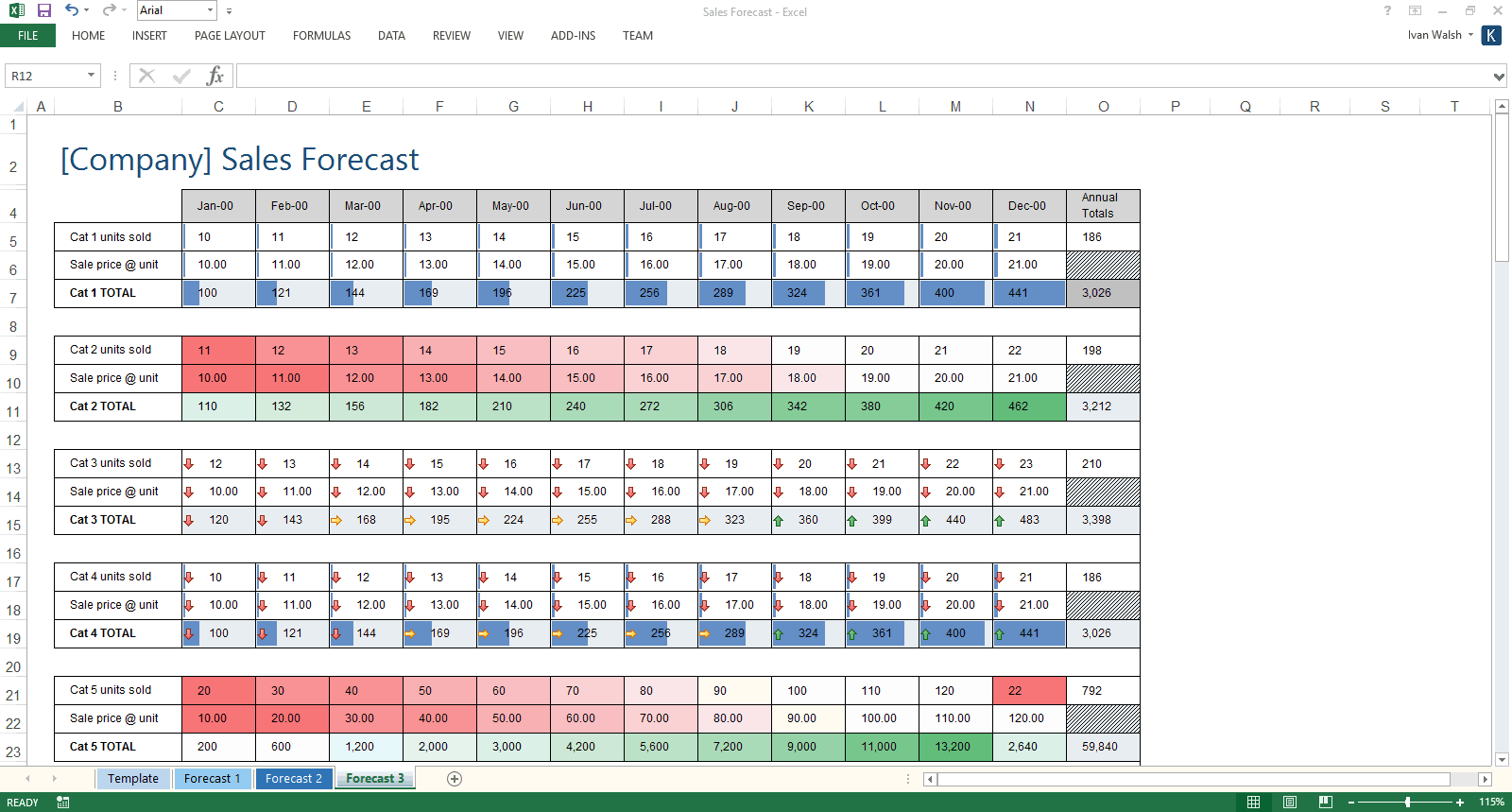Business Plan Templates
9 Mistakes to Avoid When Starting Your First Business
Summary: Creating an online business requires the same research, planning, and marketing as an offline business. Here are nine mistakes to avoid when setting up an Internet business.
[Learn more about these Business Plan templates here]
In 1996, I downloaded Netscape Navigator 2.0 and got on the web.
It was incredible.
If you weren’t there, it’s hard to explain the sheer excitement of getting your first AOL account, dialing up to go online, waiting for your first page to slowly download, and then going WOW!
The first day I went online—it was a lovely Sunday, I still remember it—I stayed online for 7 hours straight. I was transfixed. The world outside melted into the background. Hook, line and sinker. I was pulled in.
Rare Coins – My First Idea For A Web Business
I lived near Sacramento at the time.
A good friend, born in Holland but living in San Francisco, sold coins. Not just any coins, rare coins. And he made real good money from this.
He was 23, spoke broken English, and sold most of his coin through printed catalogs. His business model looked so simple. And, his car was bigger than mine, his house was bigger, and his wife… ok, I was single then. Anyway, I had an idea.
We’d sell coins over the Internet; it had to work!
- He knew how the business worked and
- I knew the how the web worked.
- And what did we have to lose?
9 Mistakes to Avoid When Developing a Web Business
It didn’t work. Looking back on it now, we made several mistakes.
1. Customer Support.
When calls first came through, ‘I didn’t get my coins, where are they’, they came in through either our land lines (at the time, I shared a house with an Irish jewelry designer, an Italian model and a German car salesman – you can imagine the confusion) and our cell phones.
Cell phones weren’t cheap in 1997 and taking overseas calls hefty incurred fees. We hadn’t foreseen that.
2. Trust.
Because we were two guys in our early 20s, and spoke like two guys in our early 20s, dealing with people over the phone didn’t always win their trust.
You can guess what they thought.
JK didn’t like to talk on the phone. His English wasn’t the greatest.
And I couldn’t answer questions about the coins, so I’d take their number, apologize, and promise to call back. Again, more time, more effort and more costs, which again we hadn’t foreseen.
3. Guarantee.
If you paid an extra $10, your coins were insured.
I noticed something interesting.
Many would spend over $500 for the coins but NOT spend an extra $10 for the insurance. They went in the regular mail. Sometimes they got lost.
More phone calls, more irate customer, more lost time. You get the idea.
4. Chargebacks.
Then we let them pay online with credit cards. Seemed like a good idea at the time… A very large order came in. It looked good.
The card was ‘accepted’ by the bank. So, we sent out the order. Another large order from the same person. Looked good. Card was ‘accepted’. Shipped the order.
Then we got a call from the bank. There was a problem with the card. There had been a chargeback; could we come in and talk. In the end, we lost the coins, lost the money and the bank weren’t thrilled.
Somehow, we were the bad guys.
5. Marketing.
We didn’t know where to start. So, we put an order in a leading magazine. And waited. It cost over $500. Not a small amount in the late 90s. So, we waited.
What did I learn?
Scattergun marketing doesn’t work. Develop a plan; stay focused.
We got a few calls in the end, but I think there were competitors sounding us out. ‘Could you send us your price list, please. We’re not sure what we want?’
6. Security.
As the business grew, we had to move the coins and equipment from our houses and rent business offices.
We’d planned for this! But, we hadn’t budgeted for the extra security costs. These were very expensive coins and couldn’t be left around.
They also had to be insured which was tricky as we bought and sold items every week.
We worked it out in the end but it took more time than we expected. And time is money…
7. Inventory.
Then, things improved.
But we hit another problem.
Our inventory was too small.
We didn’t understand cashflow (ok, we did, but not well enough) and lacked the funds to buy extra coins. Actually, that wasn’t the real problem.
8. Cashflow.
JK wanted to buy more stock; I wanted to invest in marketing.
We locked horns.
Both of us were right (in our own eyes). But neither would blink first. You know what guys can be like.
There was a standoff as none of us would give way first. The result? The business began to stagnate. And over the next six months, it degenerated into a blame game as sales slowed down to a trickle.
9. Competition.
Like I said earlier, we’d get calls from the competition looking for coins.
Or selling coins they couldn’t move. We should have partnered with some of these companies. They weren’t all crooks.
To be honest, we were afraid. Afraid that if we worked with these guys they’d outsmart us and kill our business. The irony, of course, was that we were doing that anyway.
There were others problems as well.
For example, how to coordinate things when one of us went on holidays, setting up joint bank accounts (we both had Green Cards, which made the banks suspicious), and getting more funding. We’d ploughed all our savings into the project.

[Learn more about these Business Plan templates here]
5 Steps to Starting Your Web Business (Without Less Pain)
After eighteen months, we pulled the plug on the web business. We’d lost about $7,000, which wasn’t the end of the world, but we’d also our friendship, something that would take years to repair.
Looking back on this, some mistakes were from naiveté, others were self-inflicted, such as losing trust in each other. If I was doing it again, here are the four steps I’d put in place.
#1. Develop a Business Case
Is it worth the effort? This means looking at whether the business is a viable option (do we know enough about the business? is there a demand? what problem are we solving?)
#2. Write a Business Plan
Where will it make money?
Don’t fudge this and assume the money will come in.
Avoid the ‘Field of Dreams’ syndrome. ‘If we build it, they will come.’ Maybe they will!
And maybe checks will bounce, couriers will get lost, websites will go down, funds will dry up.
Crunch the number and then crunch them again. If you’re going to put 2-3 years of your life into a business, at least spend one month doing the business first. It’s a great deal if you think about it.
#3. Develop a Marketing Plan
What’s the budget and where/how will I promote it. Have you ever sold anything in your life? Anything? If not, pay someone to do the marketing plan.
Pets, family, cousins, and old flames don’t count. Hire someone who sees this as a project, not as doing you a favor.
#4. Create an Action Plan
This is how you’re going to implement these plans on a day by day basis.
What you’re going to do is create a Work Breakdown Structure (WBS) and identify all the tasks you and your team have to do.
Remove all assumptions. ‘Oh, I thought you were doing that? Sorrrrrry!!!’
#5. Create an Editorial Calendar.
If you’re running a website, create an Editorial Calendar. Don’t blog without goals.
Plan ahead, create topics that compliment your product and – golden rule #1 – make everything you write USEFUL to the person reading it. No one cares what you think of the iPad. No, really, they don’t.
You (and the reader) don’t have much spare time, so whatever you write, make it as useful as possible. The acid test for any article is this: ask yourself, ‘can people use this information, right now?’ that’s the bottom line.
That was my first adventure on the web. The next web business I started was more successful.
I ran it myself so I had 100% control, made fewer mistakes, knew what to avoid and understood cashflow, the Achilles heel of the first business.
How about you?
What happened when you first went on the web? Or when you sold something on ebay for the first time? C’mon, don’t be shy!
[Learn more about these Business Plan templates here]
Editor’s Note: This post was originally published in April 2010 and has been updated for freshness, accuracy, and comprehensiveness.


